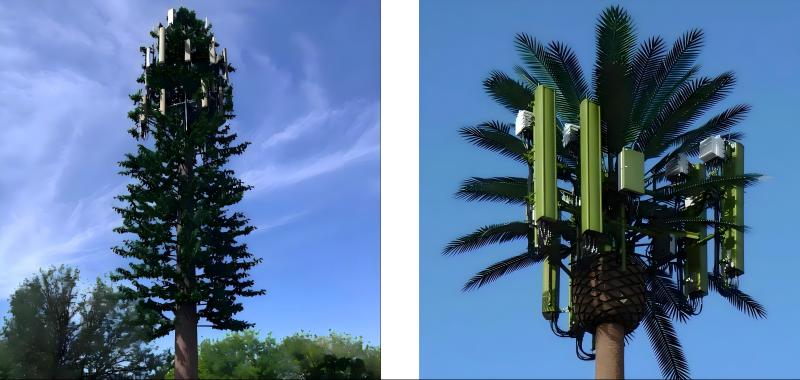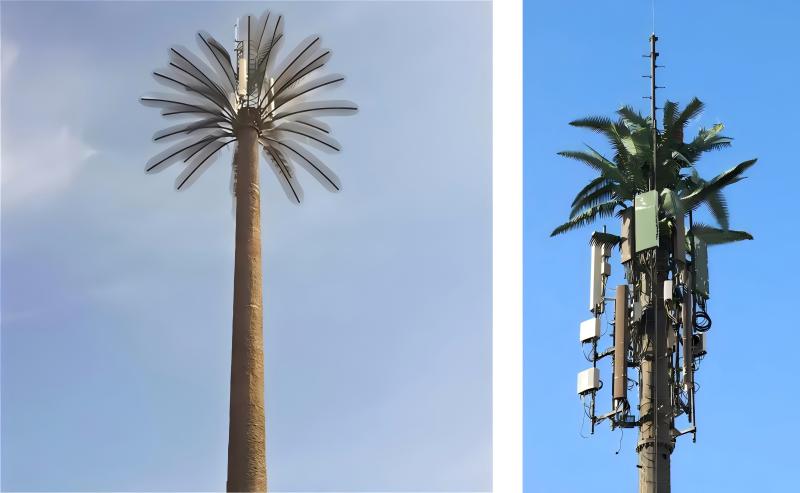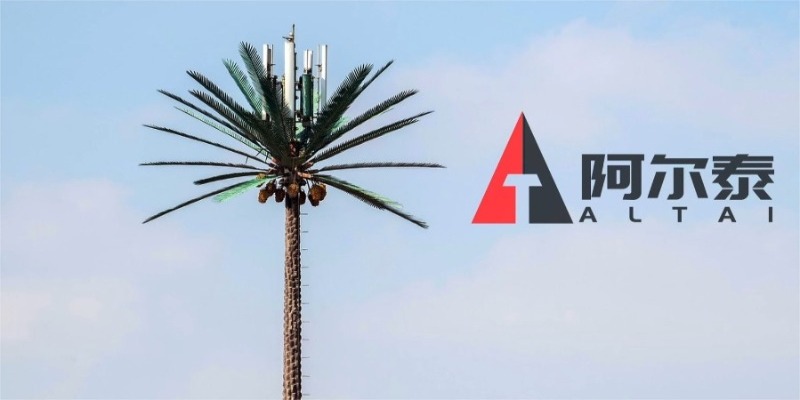In the quest to balance connectivity with aesthetics, camouflage tree towers—mimicking pine trees, palm trees, or other flora—have emerged as a popular solution for blending telecom infrastructure into natural and urban landscapes. But their visually appealing designs come at a steep price: they often cost three times more than standard monopole towers. Are these "green giants" truly worth the investment, or is their beauty just skin-deep? Let’s break down the numbers, hidden benefits, and long-term trade-offs.

Complex Manufacturing: Customized designs (e.g., artificial bark textures, lifelike branches) require advanced 3D modeling, molds, and eco-friendly composite materials.
Labor-Intensive Installation: Assembling and painting faux foliage on-site adds time and skilled labor costs.
Material Durability: To withstand weather, UV-resistant coatings and reinforced steel cores drive up material expenses.
A standard 30-meter monopole: ~$100,000.
A comparable "pine tree" camouflage tower: ~$300,000.
Annual maintenance for monopoles: ~5% of initial cost.
Camouflage towers: 10–15% (due to foliage repairs and paint touch-ups).
Faster Regulatory Approval: In scenic areas (e.g., national parks, historic cities), disguised towers face fewer objections from planners and residents.
Example: In Norway’s fjord regions, pine tree towers reduced permit approval times by 60%.
Reduced "NIMBY" Resistance: Communities rarely protest towers that look like natural elements.
Brand Reputation: Telecom operators using eco-friendly designs gain ESG (Environmental, Social, Governance) credibility.
High-Value Locations: Tourist hotspots (e.g., Dubai’s palm tree towers) or wealthy suburbs where visual pollution impacts property values.
Strict Zoning Laws: Regions like France’s Provence mandate disguised towers to preserve cultural landscapes.
Long-Term Savings: Avoiding legal battles or project delays can offset initial costs. A delayed monopole project in California incurred $500,000 in legal fees—enough to fund a camouflage tower.
Short Lifespan: Artificial foliage degrades faster than steel, requiring frequent replacements.
Limited Functionality: Heavy foliage can obstruct antenna signals, forcing compromises on coverage.
Greenwashing Risks: A 2023 study found that 70% of camouflage towers use non-recyclable plastics, undermining their "eco-friendly" claims.

Dubai’s Iconic Palm Towers:
Cost: $350,000 per tower.
Outcome: Blended seamlessly into luxury resorts, boosting tourism operator partnerships.
Norway’s Pine Camouflage:
Cost: $280,000 per tower.
Outcome: Reduced public opposition in UNESCO-protected fjord areas, enabling 5G rollout in critical zones.
3D-Printed Foliage: Startups like StealthCell claim to cut manufacturing costs by 40%.
Modular Designs: Reusable "branch" attachments could simplify upgrades.
Solar Integration: Camouflage towers with built-in solar panels (disguised as leaves) may offset energy costs.
Learn more at www.alttower.com
